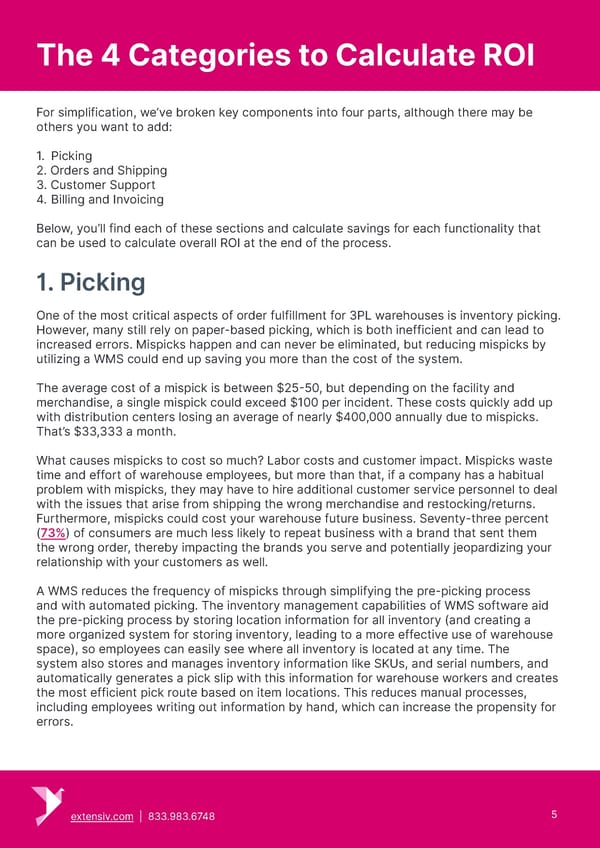The 4 Categories to Calculate ROI For simplification, we’ve broken key components into four parts, although there may be others you want to add: 1. Picking 2. Orders and Shipping 3. Customer Support 4. Billing and Invoicing Below, you’ll find each of these sections and calculate savings for each functionality that can be used to calculate overall ROI at the end of the process. 1. Picking One of the most critical aspects of order fulfillment for 3PL warehouses is inventory picking. However, many still rely on paper-based picking, which is both inefficient and can lead to increased errors. Mispicks happen and can never be eliminated, but reducing mispicks by utilizing a WMS could end up saving you more than the cost of the system. The average cost of a mispick is between $25-50, but depending on the facility and merchandise, a single mispick could exceed $100 per incident. These costs quickly add up with distribution centers losing an average of nearly $400,000 annually due to mispicks. That’s $33,333 a month. What causes mispicks to cost so much? Labor costs and customer impact. Mispicks waste time and effort of warehouse employees, but more than that, if a company has a habitual problem with mispicks, they may have to hire additional customer service personnel to deal with the issues that arise from shipping the wrong merchandise and restocking/returns. Furthermore, mispicks could cost your warehouse future business. Seventy-three percent (73%) of consumers are much less likely to repeat business with a brand that sent them the wrong order, thereby impacting the brands you serve and potentially jeopardizing your relationship with your customers as well. A WMS reduces the frequency of mispicks through simplifying the pre-picking process and with automated picking. The inventory management capabilities of WMS software aid the pre-picking process by storing location information for all inventory (and creating a more organized system for storing inventory, leading to a more effective use of warehouse space), so employees can easily see where all inventory is located at any time. The system also stores and manages inventory information like SKUs, and serial numbers, and automatically generates a pick slip with this information for warehouse workers and creates the most efficient pick route based on item locations. This reduces manual processes, including employees writing out information by hand, which can increase the propensity for errors. extensiv.com | 833.983.6748 5
 3PL Guide to Calculating ROI for Warehouse Management System Software Page 4 Page 6
3PL Guide to Calculating ROI for Warehouse Management System Software Page 4 Page 6